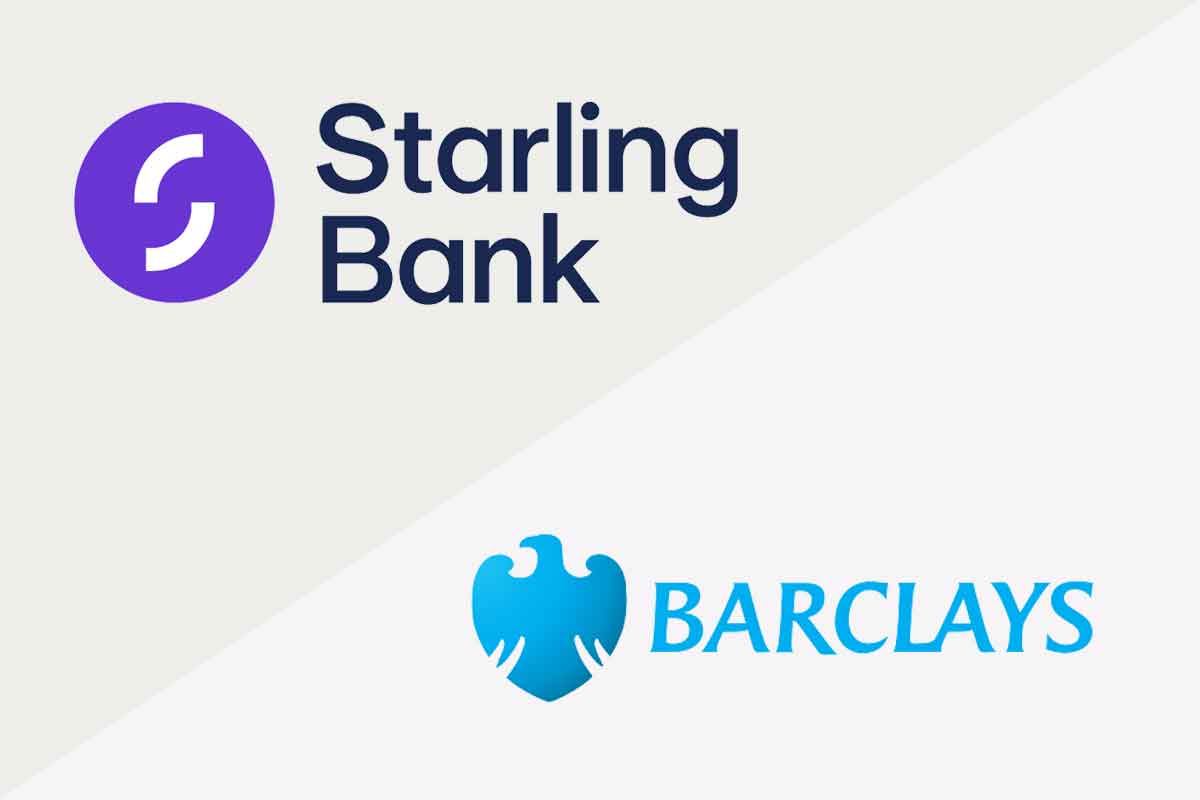When it comes to choosing a bank for your business, the options can be overwhelming. In the UK, Starling and Barclays are two popular choices that cater to the needs of businesses. Each bank offers unique features, benefits, and drawbacks. This article will compare Starling vs Barclays for business banking, highlighting the pros, cons, key differences, costs, and other important considerations to help you make an informed decision.
Starling vs Barclays
| Features | Starling | Barclays |
|---|---|---|
| Account Types | Sole Trader, Limited Company, Partnership | Sole Trader, Limited Company, Partnership |
| Digital Banking Experience | User-friendly mobile app, real-time notifications, insights | Online and mobile banking available, but may not be as streamlined |
| Branch Network | Digital-only bank, no physical branches | Vast network of branches across the UK |
| International Services | Supports international payments, limited services | Wide range of international banking services, including foreign currency accounts and trade finance |
| Additional Services | Overdraft facilities, business loans, credit cards, invoice financing | Overdraft facilities, business loans, credit cards, invoice financing |
| Industry-Specific Support | May not offer specialised industry support | Offers dedicated business support and industry-specific expertise |
| Integration with Systems | Integrates with various accounting software and business tools | Integration capabilities available, but may require further investigation |
| Customer Service | Responsive customer service, 24/7 access | Support available, but responsiveness may vary |
| Security Measures | Two-factor authentication, encryption, fraud detection | Stringent security measures in place |
| Pricing and Costs | Competitive pricing, flexible plans, free basic banking for small businesses | Costs may vary, potential for higher fees compared to digital-first banks |
| Scalability | Scalable pricing plans, accommodates growth | Supports long-term growth, offers business lending |
| Reputation | Increasingly recognized, innovative digital bank | Long-standing reputation, one of the UK’s largest banks |
It’s important to note that the information provided in the table is based on general observations and may not encompass all features and offerings of Starling and Barclays. It’s advisable to review the banks’ official websites or consult with their representatives to obtain the most accurate and up-to-date information for your specific business requirements.
Featured pro tools
Statistics
- Starling:
- As of 2021, Starling Bank had over 2 million personal and business accounts.
- Starling Bank reported a revenue of £97.6 million in the fiscal year ending November 30, 2020, showcasing its growth and financial stability.
- In a survey conducted by Smart Money People in 2021, Starling Bank received an average rating of 4.8 out of 5 from business customers, reflecting high satisfaction levels.
- Barclays:
- Barclays has a widespread presence with over 1,600 branches across the UK, making it one of the largest branch networks in the country.
- In 2020, Barclays reported a total revenue of £21.8 billion, highlighting its significant market presence and financial strength.
- Barclays has a long-standing reputation and history, dating back to 1690, giving it a solid foundation and experience in serving businesses.
Starling Bank
Starling is a leading digital-first bank in the UK, offering user-friendly mobile banking services for businesses. With a seamless online experience, real-time notifications, and competitive pricing, Starling provides businesses with efficient financial management tools and flexibility in their banking operations.
Pros of Starling for business banking
- Digital-first approach: Starling Bank is known for its user-friendly mobile banking app and seamless online experience. It offers 24/7 access to your accounts, allowing you to manage your business finances anytime, anywhere.
- Cost-effective: Starling offers competitive pricing for business accounts, including free basic banking services for small businesses. They also provide flexible pricing plans with additional features for larger businesses.
- Real-time notifications and insights: Starling’s app provides real-time notifications for transactions, helping you keep track of your business’s financial activities. It also offers useful insights and categorization of your spending, making financial management more efficient.
- Integrations and marketplace: Starling Bank integrates with various accounting software and business tools, allowing you to streamline your financial processes. The Starling Marketplace offers a range of third-party services that can be easily integrated into your business account.
Cons of Starling for business banking
- Limited branch access: Starling Bank operates as a digital-only bank, which means it lacks physical branches. If your business relies heavily on face-to-face interactions, this might be a disadvantage.
- Limited international services: While Starling Bank supports international payments, it may not offer the same level of international services and support as traditional banks like Barclays. If your business has extensive international transactions, you might need to consider this limitation.
Barclays Bank
Barclays is a renowned UK bank, catering to the diverse needs of businesses. With an extensive branch network, Barclays offers a range of business banking services, including international solutions, dedicated support, and a long-standing reputation for reliability. Their offerings encompass traditional and digital banking options, providing businesses with comprehensive financial support.
Pros of Barclays for business banking
- Extensive branch network: Barclays has a vast network of branches across the UK, making it convenient for businesses that prefer in-person banking. The branch presence also facilitates cash deposits and other services that require physical interactions.
- International banking services: Barclays offers a wide range of international services, including foreign currency accounts, international payments, and trade finance solutions. If your business operates globally, these services can be beneficial.
- Dedicated business support: Barclays provides specialized support and advice for businesses. Their business advisors can help you with various aspects of your business, including funding, growth strategies, and international expansion.
- Established reputation: As one of the UK’s largest banks, Barclays has a long-standing reputation and history of serving businesses. This can instill confidence and trust in potential clients or partners.
Cons of Barclays for business banking
- Potentially higher costs: Barclays business banking services may come with higher fees compared to digital-first banks like Starling. It’s important to carefully consider the costs and features associated with your specific business needs.
- Less streamlined digital experience: While Barclays offers online and mobile banking, its digital platform may not be as intuitive or feature-rich as Starling’s. If you prefer a seamless digital banking experience, this might be a drawback.
Starling vs Barclays – Key differences and considerations
- Account types: Both Starling and Barclays offer a range of business account options, including sole trader accounts, limited company accounts, and partnerships. Compare the features and requirements of each account type to determine which aligns best with your business needs.
- Additional services: Consider the additional services and features offered by each bank. This could include overdraft facilities, business loans, credit cards, and invoice financing. Evaluate your business’s specific requirements and the availability of these services.
- Industry-specific support: Look into whether Starling or Barclays offers tailored support or specialized solutions for your particular industry. Some banks may have expertise in certain sectors, providing industry-specific guidance and resources that can be valuable for your business.
- Customer service: Assess the quality of customer service provided by each bank. Consider factors such as response times, accessibility, and the availability of dedicated business support teams. Reliable and responsive customer service can be crucial when you encounter issues or need assistance with your business banking.
- Integration with existing systems: If your business already uses specific accounting software, payment gateways, or other financial tools, check if Starling or Barclays integrates smoothly with your existing systems. Seamless integration can save you time and effort in managing your financial operations.
- Security measures: Security is of paramount importance when it comes to business banking. Research the security measures implemented by both banks, such as two-factor authentication, encryption, and fraud detection systems. Ensure that the bank you choose prioritizes the protection of your business’s financial data and transactions.
- Future scalability: Consider the long-term growth potential of your business and assess whether the bank’s offerings can support your evolving needs. Look for features like scalable pricing plans, access to business lending, and the ability to accommodate increasing transaction volumes.
- Reviews and reputation: Seek out reviews and opinions from other businesses that have used Starling or Barclays for their banking needs. Online forums, business communities, and testimonials can provide valuable insights into the experiences of other business owners and help you gauge the overall reputation of each bank.
Starling vs Barclays – Costs and pricing
In terms of costs, both Starling and Barclays offer a range of pricing options depending on the size and requirements of your business. It’s important to carefully review the fee structures, transaction charges, and any additional costs associated with specific services or account features. Consider your business’s financial activity, transaction volumes, and projected growth when evaluating the affordability of each bank’s offerings.
Starling vs Barclays – Verdict
Ultimately, the choice between Starling and Barclays for your business banking needs depends on your unique circumstances, preferences, and priorities.
Consider the pros, cons, key differences, costs, and other considerations outlined in this article to make an informed decision that aligns with the specific requirements and goals of your business.
Remember to evaluate your banking needs periodically as your business evolves to ensure that your chosen bank continues to meet your expectations and supports your financial success.
Starling vs Barclays – FAQ
As a digital-only bank, Starling does not have physical branches. However, you can deposit cash using the Post Office’s deposit services available to Starling customers.
Yes, Barclays provides business lending solutions, including loans and lines of credit, to support the financing needs of businesses.
Starling Bank imposes transaction limits, which vary depending on the type of account and verification level. It’s advisable to review the specific account details and terms provided by Starling for accurate information.
Starling Bank supports international payments, but its international banking services may be more limited compared to traditional banks like Barclays. If your business requires extensive international services, it’s recommended to evaluate the specific offerings of both banks.
Barclays provides dedicated business support and advice, which may include industry-specific expertise to cater to the needs of businesses in various sectors. Consult with a Barclays business advisor to determine the extent of industry-specific support available.
Barclays offers integration capabilities with various accounting software and financial tools. However, the specific compatibility and ease of integration may vary. It’s advisable to consult with Barclays or check their official documentation for details on supported integrations.
Both Starling and Barclays have different fee structures for their business accounts. While Starling offers free basic banking services for small businesses, Barclays’ fees may vary depending on the specific account type, transaction volumes, and additional services required. It’s essential to review the fee schedules provided by each bank to understand the associated costs accurately.
The choice between Starling and Barclays for a small business depends on your specific needs, preferences, and priorities. Consider factors such as the digital banking experience, pricing, customer support, and the availability of services tailored to your business. Assessing your requirements against the offerings of both banks will help you determine which one aligns better with your small business’s unique needs.
Remember to conduct thorough research, read customer reviews, and consider your business’s specific requirements when making a decision between Starling and Barclays for your business banking needs.

